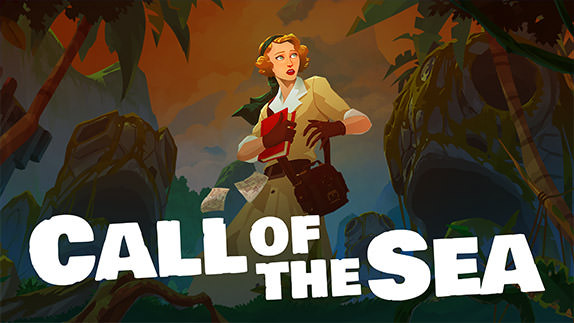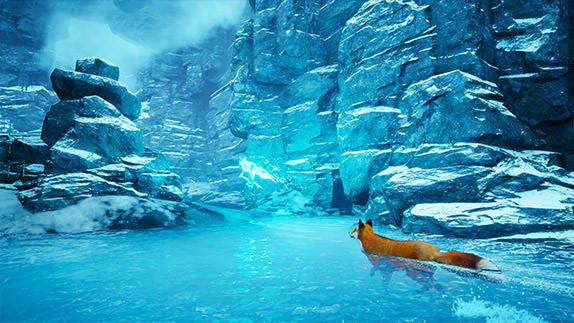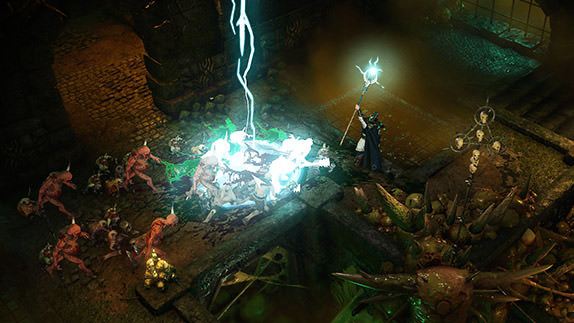Robinson: The Journey Review

 By Kevin Mitchell
Posted on November 29, 2016
By Kevin Mitchell
Posted on November 29, 2016
While Crytek is known for developing the original Far Cry, and the Crysis series, it’s their versatile game engine (CryEngine) that has extended their reach in the industry to all major platforms. Their previous virtual reality title (The Climb) released exclusively on the Oculus Rift, allowing players to scale a broad range of beautifully rendered environments from tropical oasis’s to snow enriched mountain tops. In Robinson: The Journey, you must survive on Tyson III, a planet full of mystery, danger, and even dinosaurs. You take on the role of Robin, a boy stranded in an unforgiving environment after landing in an escape pod. Your only interactions come from HIGS, an AI unit from the crashed colony ship with a witty personality, and Laika, a baby Tyrannosaurus Rex that views you as a mother-type character.
Robinson: The Journey emphasizes exploration, which comes naturally in the beautiful and at times the awe-inspiring world of Tyson III. Without question, it is the best-looking PlayStation VR title, especially when played on a PlayStation 4 Pro. To survive, Robin, with the help of HIGS, who will always help point you in the right direction, sets up a temporary base on the planet’s surface. Many of the early moments in the game require you to maintain your base, by completing tasks such as lifting rocks constricting the flow of water from a nearby stream, or replacing panels on a wind turbine powering sections of your base.
Despite Robin’s multi-tool resembling a PlayStation Move controller, the game only supports the use of the DualShock 4. With this constraint, you are forced to use the analog sticks for all of your movement. Your walking speed is kept at a leisurely pace, ensuring you are given ample time to gaze at all environment. The right stick allows you to rotate your view, giving you a couple of different comfort options based on your tolerance. I found myself feeling slightly uneasy after playing for a solid couple of hours straight using both the smooth rotation and “pie-chart” method that many first-person VR games employs. A couple hours is quite a long time playing a VR game without taking a break, so I recommend trying not to play for that long in a single session. Climbing is accomplished by aiming your head at the nearest rock or ladder rung and using the triggers to control both your left and right hand. It works better than I thought it would, as you are free to move your head around in a 3D space to get the best view of where you want to go.
Using the multi-tool’s levitation mode, you can pick up, rotate, and toss objects around. At one point I found a baseball and a paper airplane and proceeded to send one at a nearby dinosaur and the other off a cliff. Certain objects are too heavy for the tool, such as large wrecked panels from the crashed ship. To move these around, you must be near one of the power stations that can negate the gravity in the vicinity. These are largely used in the puzzle sections of the game, whether you are trying to divert power to previously turned off systems, or using them to help access blocked off parts of the environment.
You can also flip a switch and use the multi-tool to scan all of the local inhabitants and parts of the environment. When you aim the tool, which is accomplished by moving your head, you will see green and red glowing orbs or dots outlining anything that can be scanned. Scanning all of the green dots, while avoiding any red dots, will successfully add it to your expansive Infotarium. If you end up scanning a red dot, all of the dots will reset, and you have to start over. Easily accessible, the Infotarium serves as a database for all the creatures, and HIGS units that you discovered. It features quite a bit of information and lore regarding the planet and its prehistoric inhabitants.
Wondering around the world feels like you stepped through a time portal, giving off a strong Land of the Lost vibe with the prehistoric, yet sci-fi setting. Although can you play games with your T-Rex companion Laika, she comes in handy at times to scare predators away. For example, velociraptors are known as the fiercest, and most intelligent hunters that ever lived, and without Laika’s roar to scare them off, you’ll be facing a quick death. Dying sets you back to a previous checkpoint, negating any progress you have made, including any creatures that you’ve scanned along the way. When I began my journey, I made sure to scan every single moth, dragonfly, mole, and dinosaur that I could, but I certainly relaxed through parts of the game after having to go through them multiple times. The game takes roughly four-five hours to complete, so it is one of the lengthy adventures currently available on PlayStation VR, and you can add a couple of hours to that if you plan on scanning everything or collecting all of the trophies.
Simply Put
Robinson: The Journey is the best looking PlayStation VR game currently available, complete with PlayStation 4 Pro support. With the extra power gained from the PS4 Pro, textures are cleaner and sharper looking, edges are smoother, and the draw distance has been expanded providing some awe-inspiring scenery moments. Exploring Tyson III walking beside huge dinosaurs is certainly the highlight of the experience. The puzzles are largely fetch based, and rather rudimentary in design, but help push the narrative forward. The true reason to play the game is to explore a prehistoric sci-fi setting, watching pterodactyls soar in the distance, and lumbering giant brontosaurus walking right passed you.
Note: Robinson: The Journey was reviewed on PlayStation VR. A digital copy of the game was provided by the publisher/developer.




